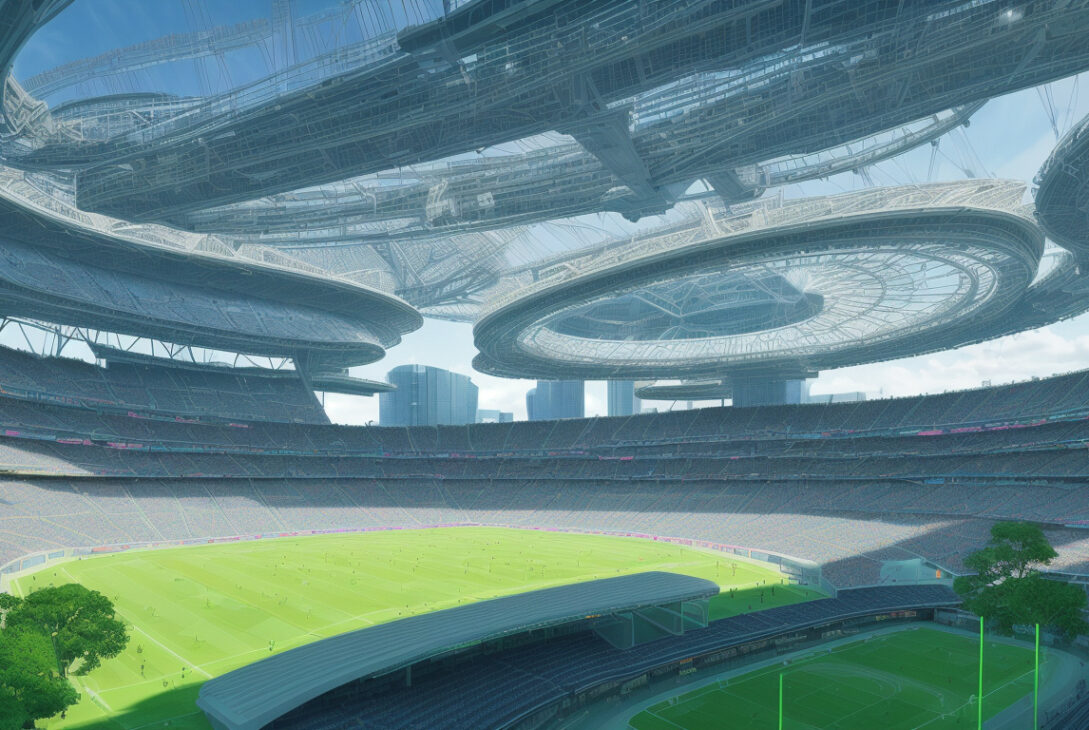Ten Upcoming Sports Stadiums Revolutionizing the Field with Advanced Technology
As the world of sports continuously evolves, so does the architecture and technology embedded within stadiums around the globe. Following the buzz generated by recent construction photos of the Buffalo Bills’ new stadium featuring a state-of-the-art snow-melting system, Dezeen Magazine has compiled a list of ten upcoming sports stadiums poised to transform the spectator and player experience through cutting-edge innovations and sustainable designs.
-
Highmark Stadium – Buffalo Bills, USA
Designed by architectural firm Populous, the new home of the National Football League’s Buffalo Bills boasts what is described as "the world’s largest and technically advanced snow melt system." The stadium is equipped with sensors integrated into its steel canopy, engineered not only to monitor snowfall but also to amplify crowd noise. When snow is detected, a hydronic heating system beneath the surface is activated automatically, keeping the field clear and playable in harsh winter conditions. -
Oxford United Football Club Stadium – UK
AFL Architects is in charge of bringing to life the UK’s first all-electric stadium for Oxford United Football Club. This pioneering project will run entirely on renewable energy, utilizing 3,500 square meters of roof-mounted solar panels complemented by an air-source heat pump. This bold step advances sustainability in sporting venues, reducing carbon footprint while powering all stadium operations. -
New York City Football Club Stadium – USA
International architecture firm HOK is developing Major League Soccer’s first fully electric stadium for New York City Football Club. While details are under wraps, this project aligns with growing efforts to incorporate renewable energy and modern electrification technologies in major sports facilities. -
Hangzhou International Sports Centre – China
Zaha Hadid Architects have crafted an innovative design for three venues within Hangzhou’s Future Science and Technology Cultural District, including a 60,000-seat football stadium. The complex integrates hybrid ventilation systems, ground-source heat pumps, and photovoltaic panels. Their design features a semi-transparent facade with undulating seats and louvres that provide shade to food kiosks, enhancing both comfort and energy efficiency. -
Estádio da Luz Renovation – Lisbon, Portugal
SL Benfica’s Estádio da Luz, initially completed in 2004, is undergoing modernization led by Populous and Saraiva + Associados. It will feature a programmable LED skin wrapped around a new facade designed to regulate light and heat while preserving the iconic roof trusses. This blend of high-tech and heritage aims to offer dynamic visual effects and improved environmental control. -
Athletics Las Vegas Ballpark – USA
The new ballpark for Major League Baseball’s Athletics team, designed collaboratively by BIG and HNTB, will feature what is touted as the "largest cable-net glass wall in the world." Nicknamed the Armadillo due to its unique shell-like structure, this venue emphasizes natural light and visibility, setting a new benchmark for contemporary baseball stadium architecture. -
Manchester United Stadium – UK
Foster + Partners, led by founder Norman Foster, plan an ambitious 100,000-seat stadium for Manchester United, wrapped in a vast tent supported by three masts. The design emphasizes the use of "cutting-edge prefabrication technologies" to accelerate construction, aiming for completion within five years. This landmark development will be the largest stadium of its kind in the UK, embodying seamless integration of technology and design. -
Chicago Bears Stadium – USA
Manica Architecture’s stadium for the NFL’s Chicago Bears is one of Illinois’ largest construction projects. It will feature a translucent roof and a multi-storey glass wall on the northern end, designed to enhance natural lighting and connectivity with the surrounding landscape. Despite its technological advancements, the project has sparked debate due to concerns over cost and its location along Lake Michigan’s shore. -
Olympic Stadium Roof Replacement – Montreal, Canada
GMP Architekten is tasked with redesigning the roof of Montreal’s 1976 Olympic Stadium, originally designed by Roger Taillibert but plagued by technical failures. The new roof will maintain the iconic cable suspension system partially while introducing solutions to increase natural light and ensure reliable operation, addressing decades of maintenance challenges. -
Prince Mohammed Bin Salman Stadium – Qiddiya, Saudi Arabia
As part of Saudi Arabia’s preparation to host the 2034 FIFA World Cup, Populous is designing the Prince Mohammed Bin Salman Stadium, perched dramatically atop a cliff. It will boast digital screens enveloping its exterior and innovative retractable roof, pitch, and LED walls. These features offer unprecedented versatility, enabling rapid configuration changes suited to diverse events within mere hours.
Bonus: Stadium of the Future – Jacksonville Jaguars, USA
HOK’s renovation design for the Jacksonville Jaguars’ stadium will cloak the existing structure in sinuous reflective cladding covered with a translucent membrane. The renovation aims to merge the venue seamlessly with Jacksonville’s natural environment, creating a park-like atmosphere enriched with advanced amenities and interactive social spaces.
These ten stadium projects illustrate the growing trend of harnessing technology to improve sustainability, enhance fan engagement, and provide adaptable, resilient venues. From renewable energy systems and automated climate control to architectural innovations integrating natural light and dynamic facades, the future of sports architecture is moving fast and blending high tech with environmental consciousness.
For more detailed insights and images of these projects, please visit the Dezeen website.
—
Nat Barker
24 August 2025
Dezeen Magazine










